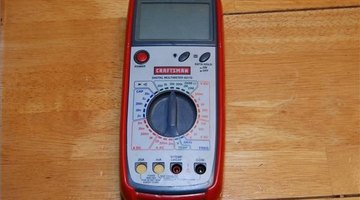How to Troubleshoot a 3-Phase Electric Motor
Three-phase motors are normally used in commercial-type operations. These motors have fewer parts and are more sturdily built than their single-phase counterparts. As a result these motors are less prone to malfunctions and tend to operate for many years.

Because of their industrial use, if they are receiving the correct voltage, they are normally quickly replaced or sent to be rebuilt rather than being extensively troubleshot. Follow the steps below to check for the most common problems for three-phase motors.
Things You Will Need
- Common hand tools
- Volt ohmmeter with probes
-
Take input voltage to the motor using the volt ohmmeter. The motor-specified voltage must be present on all three phases. If not, check supply circuitry, breakers and condition of the motor's power cord. If the voltage is good, go to Step 2.
-
Examine the motor's electrical connections and terminals. Remove power to the motor and repair any damaged or loose connections.
-
Remove motor voltage and disengage the motor from the machine that it is running. Reconnect motor voltage and see if the motor now runs. If it does, check the machine for serviceability. If not, go to Step 4.
-
Check the motor for heat or burnt smell. Clean motor windings and housing with shop air or vacuum and then try to restart. Replace motor if it will not restart.
Tip
See the resource section below for a link on how to use a voltmeter.
Warning
Use caution when working with electricity. Make sure input voltage is removed and the source is collared or tagged to prevent electrocution. Always wear safety glasses when working on equipment.
The Drip Cap
- Three-phase motors are normally used in commercial-type operations.
- These motors have fewer parts and are more sturdily built than their single-phase counterparts.
- If not, check supply circuitry, breakers and condition of the motor's power cord.
- Replace motor if it will not restart.
Resources
Writer Bio
Daniel Ray has been writing for over 15 years. He has been published in "Florida Sportsman" magazine. He holds an FAA airframe and powerplant license and FCC radiotelephone license, and is also a licensed private pilot. He attended the University of South Florida.
Photo Credits
- All images and illustrations by Dan Ray
- All images and illustrations by Dan Ray
More Articles



